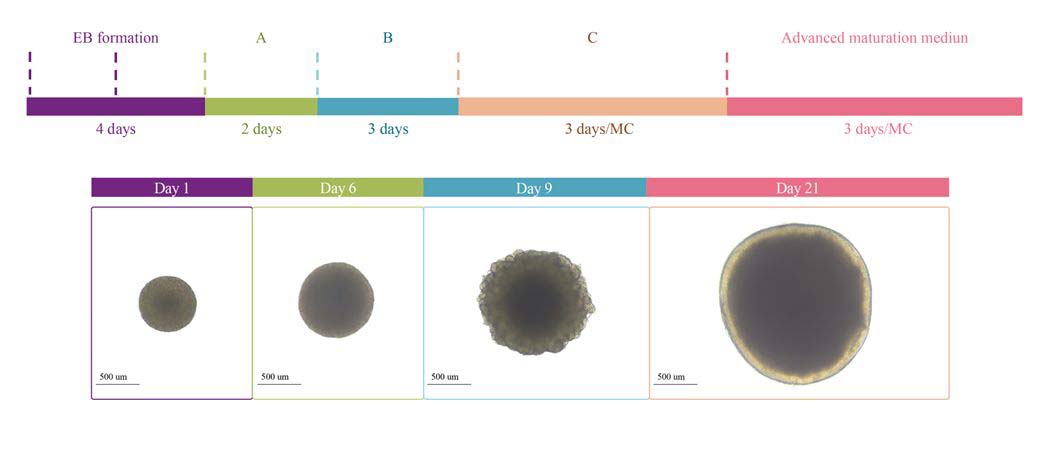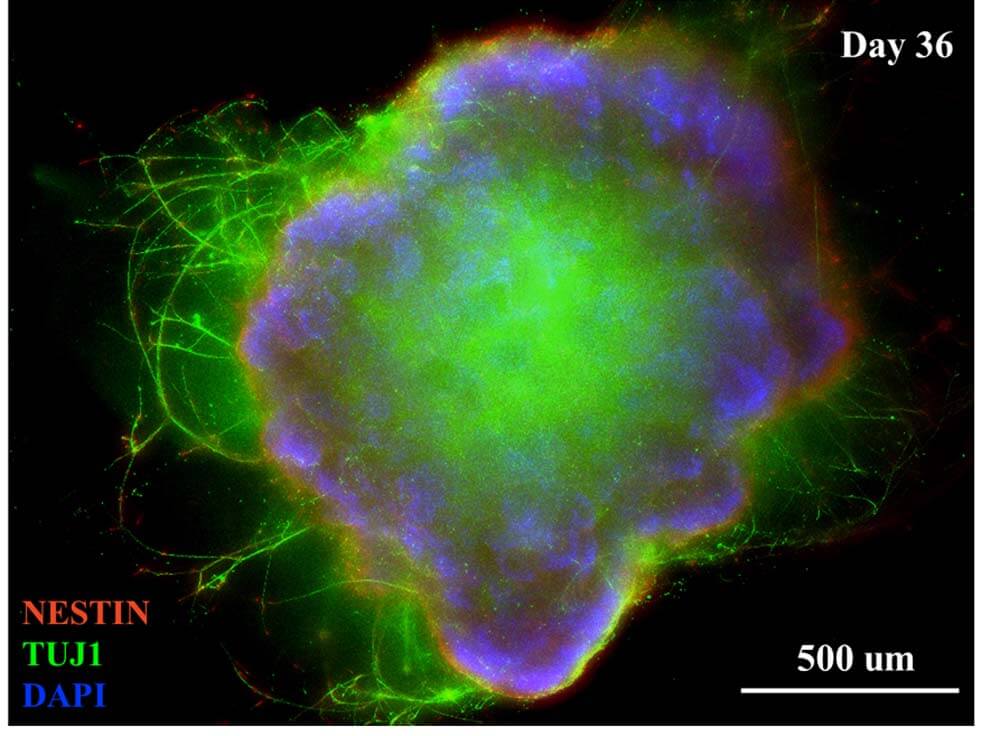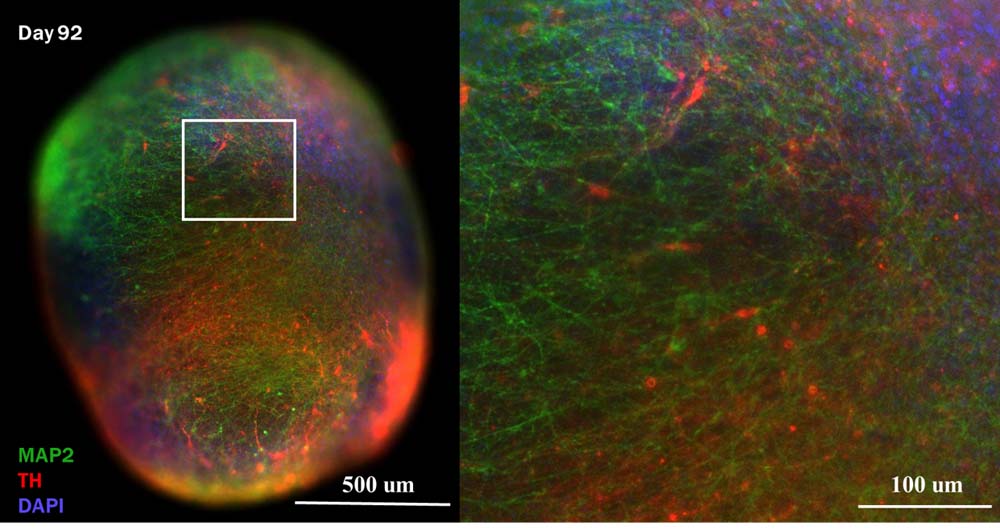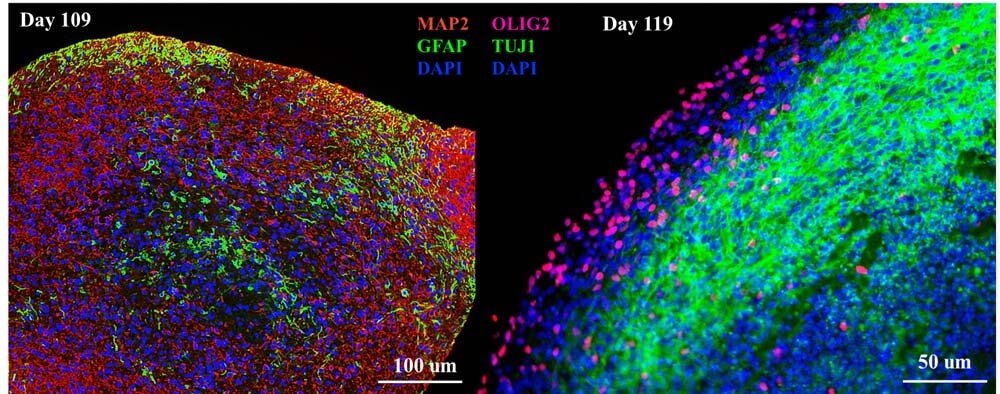组分(Materials Provided)
| ID | Components | Size |
| RIPO-BWM003-C01 | Basal medium MM | 225ml |
| ID | Components | Size |
| RIPO-BWM003-1-C01 | Supplement MM-1 | 20ml |
| RIPO-BWM003-1-C02 | Supplement MM-2 | 5ml |
产品描述(Product Details)
Cerebral organoids are three-dimensional in vitro models with a cellular composition and structural organization that is representative to the human cerebral regions. Human iPSC-Derived Cerebral Organoid maintenance Kit allows the maturation and the long-term maintenance of cerebral organoids.
产品特征(Product Specification)
The basic medium of this kit is a serum-free, well-defined medium with minimal batch variation to which differentiation factors are added. This medium does not contain antibiotics, the addition of which may affect cerebral organoid differentiation.
存储(Storage)
The unopened Box A is stable for 12 months from the date of manufacture if stored under 2-8°C.
The unopened Box B is stable for 12 months from the date of manufacture if stored under -20°C.
The opened kit should be stored according to components table.
产品示意(Product Diagram)

Protocol Diagram of cerebral organoid differentiation.
验证数据(Validation Data)
Orgnaoid Histology

Left: Early-stage cerebral organoid show rosette-like structures (neural stem cells), which become smaller as organoids develop.
Right: Day 109 cerebral organoids show uniform morphology and show no dead core inside.
Marker Expression

Presence of TH and MAP2 positive neurons in day 92 cerebral organoid.
TH: used as cell marker of dopaminergic neurons.
MAP2: mature neuron cell marker.

Left: Presence of GFAP positive cells at day 109 cultured cerebral organoid.
Right: Presence of OLIG2 positive cells at day 119 cultured cerebral organoid.
GFAP: marker for astrocyte.
OLIG2: marker for oligodendrocyte.

Presence of TH and IBA1 positive cell in day 147 cultured cerebral organoid.
IBA1: cell marker for microglia.
Organoid Activity

A: patch-clamp recording of excitatory neurons dissociated from cerebral organoids at day 102. Excitatory neuron show stable response to step injection currents.
B: Recording of cerebral organoid (day 60) using silicon probe. Neurons that show spontaneous activities have different waveforms.
C: MEA recording of cerebral organoid (day 86), spontaneous activities and bursting activities are recorded.
Organoid Application

Using cerebral organoids for modelling Parkinson's Disease. Cerebral organoids are treated with Human Alpha-Synuclein Pre-formed Fibrils Protein. Dopaminergic neurons and MAP2 positive neurons are damaged with both 0.1 μM and 1 μM Alpha-Synuclein Pre-formed Fibrils.

AAVs selection using cerebral organoids: Different capsid of AAVs were incubated with cerebral organoids. As the results, different affinities of each AAV to the cerebral organoid were observed.























































 膜杰作
膜杰作 Star Staining
Star Staining












